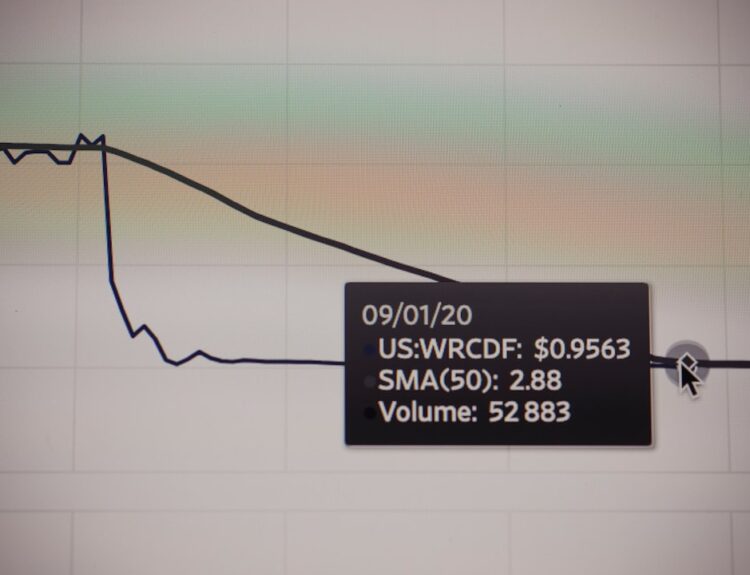Fundamental analysis is a method used by investors and analysts to evaluate the intrinsic value of a security, primarily stocks. This approach involves examining various economic, financial, and other qualitative and quantitative factors to determine whether a stock is undervalued or overvalued in the market. Unlike technical analysis, which focuses on price movements and trading volumes, fundamental analysis seeks to understand the underlying factors that drive a company’s performance and its potential for future growth.
By assessing these elements, investors can make informed decisions about buying, holding, or selling stocks. At its core, fundamental analysis is about understanding the business behind the stock. This includes analyzing the company’s financial statements, such as the income statement, balance sheet, and cash flow statement.
These documents provide insights into a company’s profitability, financial health, and operational efficiency. Additionally, fundamental analysts consider macroeconomic factors such as industry trends, economic indicators, and competitive positioning. By synthesizing this information, investors can form a comprehensive view of a company’s potential and make strategic investment choices based on its true worth.
Key Fundamental Indicators
To conduct effective fundamental analysis, investors rely on several key indicators that provide insights into a company’s financial health and operational performance. These indicators serve as benchmarks for evaluating a company’s profitability, efficiency, and overall market position. Among the most critical indicators are Earnings Per Share (EPS), Price-to-Earnings (P/E) Ratio, Return on Equity (ROE), Debt-to-Equity Ratio, and Dividend Yield.
Each of these metrics offers unique insights into different aspects of a company’s performance and can significantly influence investment decisions. Understanding these indicators is essential for investors who wish to assess a company’s potential for growth and profitability. For instance, EPS provides a direct measure of a company’s profitability on a per-share basis, while the P/E ratio helps investors gauge how much they are paying for each dollar of earnings.
ROE indicates how effectively a company is using shareholders’ equity to generate profits, while the Debt-to-Equity Ratio reveals the extent to which a company is financing its operations through debt versus equity. Lastly, Dividend Yield offers insights into the income potential of an investment relative to its price. By analyzing these indicators collectively, investors can develop a well-rounded perspective on a company’s financial standing.
Earnings Per Share (EPS)

Earnings Per Share (EPS) is one of the most widely used metrics in fundamental analysis, representing the portion of a company’s profit allocated to each outstanding share of common stock. It is calculated by dividing net income by the number of outstanding shares. A higher EPS indicates greater profitability and is often viewed favorably by investors.
Companies with consistently increasing EPS figures are typically seen as financially healthy and capable of generating sustainable growth. EPS can be reported in two forms: basic EPS and diluted EPS. Basic EPS considers only the shares currently outstanding, while diluted EPS accounts for potential shares that could be created through stock options or convertible securities.
This distinction is crucial for investors because diluted EPS provides a more conservative view of earnings per share by factoring in potential dilution from future equity issuances. Analyzing trends in EPS over time can reveal important insights into a company’s growth trajectory and operational efficiency.
Price-to-Earnings (P/E) Ratio
| Company | P/E Ratio |
|---|---|
| Company A | 15.6 |
| Company B | 20.3 |
| Company C | 18.9 |
The Price-to-Earnings (P/E) ratio is another fundamental indicator that plays a pivotal role in stock valuation. It is calculated by dividing the current market price per share by the earnings per share (EPS). The P/E ratio serves as a gauge of how much investors are willing to pay for each dollar of earnings generated by the company.
A high P/E ratio may suggest that investors expect significant growth in the future, while a low P/E ratio could indicate that the stock is undervalued or that the company is facing challenges. Investors often compare a company’s P/E ratio to that of its industry peers or the broader market to assess relative valuation. For example, if Company A has a P/E ratio of 25 while its industry average is 15, it may indicate that investors have high expectations for Company A’s future growth prospects.
However, it is essential to consider the context behind these numbers; a high P/E ratio may not always be justified if the company lacks solid fundamentals or if market conditions change. Conversely, a low P/E ratio could signal an opportunity if the company has strong fundamentals and growth potential.
Return on Equity (ROE)
Return on Equity (ROE) is a critical measure of a company’s profitability relative to shareholders’ equity. It is calculated by dividing net income by average shareholders’ equity over a specific period. ROE provides insights into how effectively a company is utilizing its equity base to generate profits.
A higher ROE indicates that the company is efficiently using shareholders’ funds to produce earnings, making it an attractive option for investors seeking strong returns. ROE can also be influenced by factors such as leverage and profit margins. Companies with high levels of debt may exhibit elevated ROE figures due to lower equity bases; however, this can also increase financial risk.
Therefore, it is essential for investors to analyze ROE in conjunction with other metrics like the Debt-to-Equity Ratio to gain a comprehensive understanding of a company’s financial health. Additionally, comparing ROE across companies within the same industry can help identify which firms are better at generating returns on equity.
Debt-to-Equity Ratio

The Debt-to-Equity Ratio (D/E) is an important indicator that measures a company’s financial leverage by comparing its total liabilities to its shareholders’ equity. This ratio provides insights into how much debt a company is using to finance its operations relative to equity financing. A higher D/E ratio suggests that a company relies more heavily on debt, which can amplify returns during good times but also increases risk during downturns.
Investors often use the D/E ratio to assess financial stability and risk exposure. A company with a low D/E ratio may be viewed as more conservative and less risky since it relies less on borrowed funds. Conversely, companies with high D/E ratios may face challenges in meeting their debt obligations during economic downturns or periods of reduced cash flow.
However, it is essential to consider industry norms when evaluating D/E ratios; some industries naturally operate with higher leverage due to their capital-intensive nature.
Dividend Yield
Dividend Yield is an essential metric for income-focused investors as it measures the annual dividend payment relative to the stock’s current price. It is calculated by dividing the annual dividends paid per share by the stock’s current market price per share. A higher dividend yield indicates that an investor receives more income relative to their investment cost, making it an attractive feature for those seeking regular income from their investments.
Investors often look for companies with consistent dividend payments and growth in dividends over time as indicators of financial health and stability. Companies that regularly increase their dividends are often seen as financially sound and committed to returning value to shareholders. However, it is crucial to assess whether the dividend yield is sustainable; an unusually high yield may signal potential issues if it results from declining stock prices rather than robust earnings growth.
Using Fundamental Indicators for Stock Analysis
Incorporating fundamental indicators into stock analysis allows investors to make informed decisions based on comprehensive evaluations of companies’ financial health and growth potential. By analyzing metrics such as EPS, P/E ratio, ROE, D/E ratio, and dividend yield collectively, investors can develop a nuanced understanding of a company’s strengths and weaknesses. For instance, an investor might identify a company with strong EPS growth and an attractive P/E ratio compared to its peers but also notice that its D/E ratio is significantly higher than industry averages.
This could prompt further investigation into whether the company’s leverage poses risks that could impact future earnings or dividend payments. Similarly, if another company shows consistent dividend growth alongside high ROE but has a declining EPS trend, it may raise concerns about sustainability despite its attractive yield. Ultimately, effective stock analysis requires not only an understanding of individual indicators but also an ability to synthesize this information into actionable insights.
By leveraging fundamental analysis techniques and focusing on key indicators, investors can navigate complex market environments with greater confidence and make decisions aligned with their investment objectives.
FAQs
What are fundamental indicators when analyzing a stock?
Fundamental indicators are financial metrics and ratios that provide insight into a company’s financial health, performance, and valuation. These indicators are used to assess the intrinsic value of a stock.
What are some common fundamental indicators used in stock analysis?
Common fundamental indicators include price-to-earnings ratio (P/E ratio), earnings per share (EPS), return on equity (ROE), debt-to-equity ratio, and dividend yield. These indicators help investors evaluate a company’s profitability, financial leverage, and growth potential.
How can fundamental indicators help in stock analysis?
Fundamental indicators can help investors make informed decisions about buying or selling stocks. By analyzing these indicators, investors can assess a company’s financial strength, growth prospects, and overall value, which can guide their investment decisions.
What are the steps to analyze a stock using fundamental indicators?
The steps to analyze a stock using fundamental indicators include gathering financial data, calculating key ratios, comparing the company’s performance to its peers, and interpreting the results to make investment decisions. It’s important to consider both quantitative and qualitative factors in the analysis.
What are the limitations of using fundamental indicators in stock analysis?
While fundamental indicators provide valuable insights, they have limitations. These indicators may not capture all aspects of a company’s performance, and they do not account for market sentiment or external factors. It’s important to use fundamental indicators in conjunction with other analysis methods for a comprehensive assessment.



